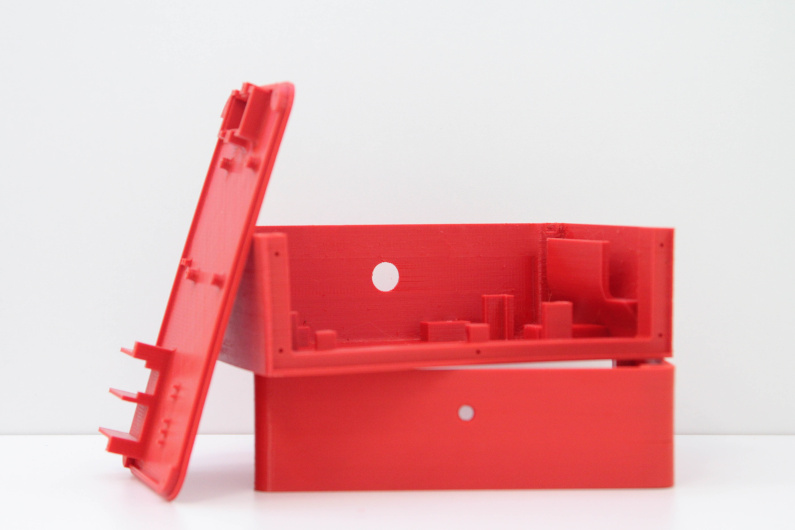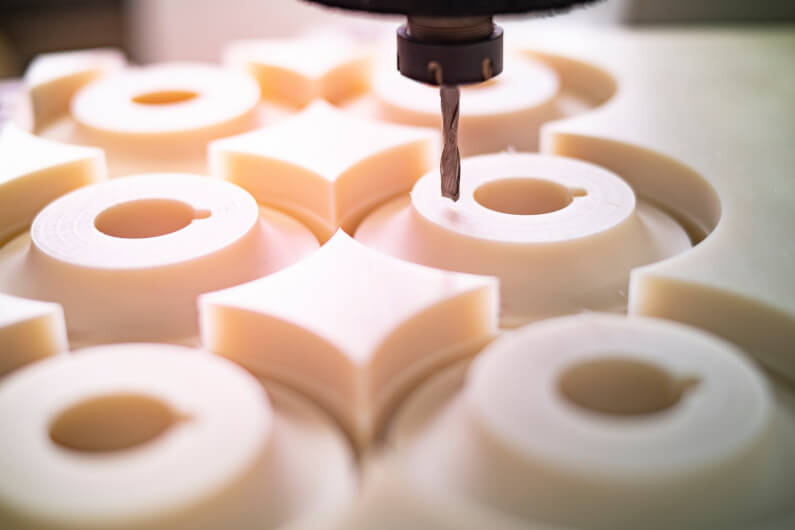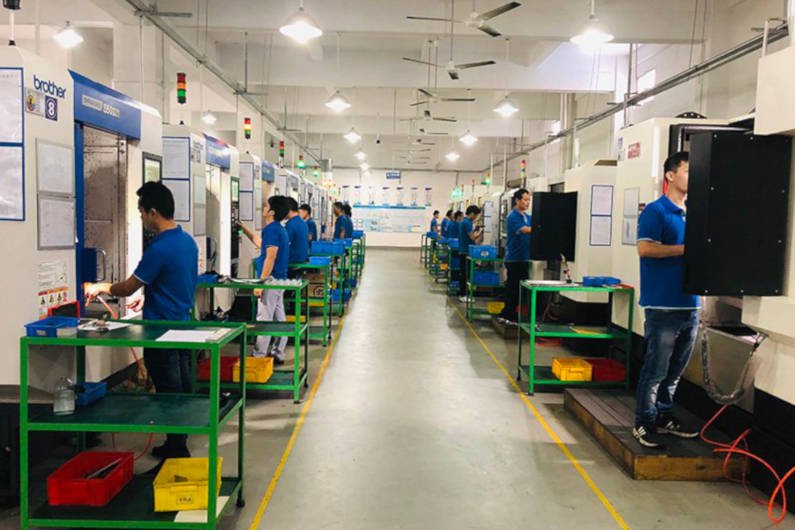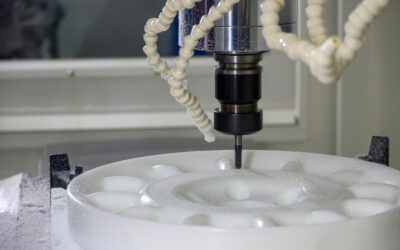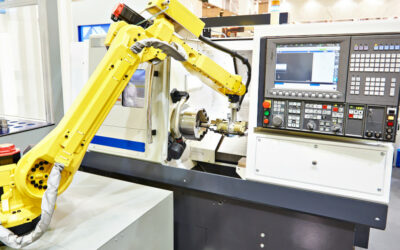Plastics are incredibly useful. They’re affordable and very lightweight. They can also offer benefits, like chemical resistance, transparency, elasticity, electrical resistance, and more, depending on the plastic.
ABS is a popular plastic for applications that need a strong, stable plastic that can be formed easily. It is commonly used for rapid prototyping and 3D printing, as well as plumbing fittings, children’s toys, automotive interior features, and electronics parts.
The most precise and high-quality ABS parts are made using CNC machining to achieve tight tolerances. This article explains what ABS plastic is, the challenges of machining it, and some tips to improve the quality of your machined ABS products.
What is ABS Plastic?
Acrylonitrile butadiene styrene, or ABS, is a thermoplastic polymer known for its excellent balance of materials properties. It has good toughness and chemical resistance, along with a range of other customizable properties depending on the additives included in the plastic’s chemical formulation.
ABS plastic is made by combining its three monomer constituents, acrylonitrile, butadiene, and styrene, along with any other desired additives. ABS plastic stock can then be melted and reshaped using injection molding, extrusion, or 3D printing.
Precision machining ABS is an excellent option for parts with strict quality requirements and tight tolerances. However, it’s best to use machine-grade ABS plastics if you plan to include machining in the ABS manufacturing process.
Benefits of ABS Plastic

- Good impact strength
- High toughness
- Good chemical resistance
- Good electrical resistance
- Accepts a wide range of colors
- Excellent manufacturability thanks to good relative heat resistance without an excessively high melting temperature.
- Recyclable and suitable facilities
Additionally, manufacturers can selectively improve some of these qualities by changing the processing temperatures and using specific additives. Some chemical additives can even help improve UV resistance or make the ABS transparent.
Challenges of CNC Machining ABS Plastic

As with other machined plastics, two very common machining defects in ABS plastic are distortion and a poor surface finish.
Plastics with tooling marks or chatter lines will not meet surface quality requirements. Additionally, any scratches and lines can make transparent parts appear foggy or cause leaks in ABS fittings.
Several factors can negatively impact surface quality in ABS plastic parts. Using the wrong cutting tools, using incorrect cutting parameters, and excessive heat build-up are a few common examples of ways that the surface of ABS parts can be damaged.
The other common challenge with ABS plastic is preventing distortion. Relative to commonly machined metals, ABS plastics experience significant thermal expansion when heated. This can cause an inexperienced machinist to remove too much material, which will be evident when the part cools and shrinks.
If this wasn’t enough, ABS plastics have relatively low heat deflection temperatures and thermal conductivities. As a result, heat can build up quickly at the machining location, softening the plastic and causing it to deform.
Overall, this means designers and machinists need to use caution when working with ABS plastics, especially for thin or intricate parts that can be easily distorted.
5 Tips for Machining ABS Plastic
To avoid the pitfalls associated with machining ABS plastic, producers often use one or more of these tricks to ensure high-quality results.
#1 – Use machine-grade ABS plastic
There are several different grades of ABS plastic, with unique formulations optimized for extrusion, casting, or machining. Always use machine-grade ABS plastics when milling, turning, or drilling to ensure good chip formation and a superior surface finish.
#2 – Use appropriate cutting tools
Unsurprisingly, the tooling optimized for machining high-strength steel and titanium alloys is not the best choice for ABS plastics. Machinists familiar with plastics machining will know to choose cutting tools designed for plastics. It’s also essential to ensure these cutting tools remain sharp to prevent damage to the plastic’s surface.
#3 – Adapt your cutting parameters
Cutting too deep or too shallow in a single pass can deform the part or cause machining chatter. And using the wrong cutting speed or feed rate can cause excessive heat build-up that distorts your ABS parts. Unfortunately, finding the right cutting parameters for your part mostly comes with experience, but the improvements in quality are worth optimizing this part of the machining process.
As a bonus note, ensure your machining setup secures the ABS part firmly without over-compressing it, which could distort the final part.
#4 – Use an appropriate coolant
ABS plastic can overheat and deform during machining if coolant isn’t applied. But not just any coolant will do. ABS plastic has good overall chemical resistance, but it can still be contaminated by coolants designed for metals or ceramics.
Most plastics need a non-aromatic, water-soluble coolant optimized for machining plastic parts. Plastic coolants can be applied as a jet of pressurized gas, a continuous mist, or a flowing liquid depending on the specific coolant used and the part’s design.
#5 – Anneal the ABS plastic
Plastic parts that haven’t been annealed may have large internal stresses that are not obvious in the stock material. If the ABS material is then heated during machining or while in service, these stresses could distort the final part, warping its shape outside tolerance limits.
By putting ABS plastic in a heat treatment oven prior to machining, the material can be slowly heated, held at the annealing temperature, then slowly cooled to relieve internal stresses.
Create Machined ABS Products with Gensun
At Gensun, we offer top-quality plastic machining services at an affordable rate. Our experienced machinists know how to work with a wide range of materials, including ABS plastic, to ensure your parts consistently meet or exceed surface finish and tolerance requirements.
Contact Gensun today to see how we can make your next plastics machining project a success.

